|
1862. Irish washerwoman at Counters Creek watches a turd floating downstream to the Thames. A 16 year old laundress at a workshop on Latimer Road, 1890. Dreaming of better pay and romance. 1924 and a depressed char lady, thinks about going to a birth control clinic that has opened in the area. V-E day in Europe and women at the Silchester Road bath and wash house sing: “We're going to hang out the washing on the Siegfried Line!” Testerton Road, North Kensington 1967: West Indian sisters are flooded out of a slum house and seek sanctuary at the bath house. 1970s: the building of Lancaster West estate and the campaign to save the Victorian bath and wash house. 1980s: residents of Grenfell tower look down on the bulldozed bath and wash house. Dirty Linen washed on 12 pages Artist's book, 6x4" Oil pastels, ink, pencil 2019 Project blog post: To marry an ironer is as good as a fortune
0 Comments
WASHING DIRTY LINEN IN PUBLIC (2019, 46 mins) SCREENING DURING THE PORTOBELLO FILM FESTIVAL 2019 On A DOUBLE BILL WITH ROBIN IMRAY'S 1974 DOCUMENTARY NORTH KENSINGTON LAUNDRY BLUES (1974, 10 mins) MUSE GALLERY, 269 PORTOBELLO ROAD, NOTTING HILL, LONDON W11 1LR
Washing Dirty Linen in Public was first performed as a guided walk and performance piece that was commissioned as part of Serpentine Galleries Hito Steyerl: Power Plants. Extracts were also staged during the Portobello Pavilion festival of art. Reviews: Jackie Blanchflower: I can't tell you how pleased I was that I gave up my Saturday morning to come to the Power Walk last Saturday. It was great to have the guided walk and performances and lovely to hear from locals who remembered the Silchester Baths and the campaign to save them. It is really good to make history come alive and of course it does repeat itself! It would be great to expand into discussions on power and powerlessness and speaking to power. Mary White: It was fascinating. There was a good sense of flow through the ages and it was inspiring to hear how women have worked together to be empowered in various ways in the area over the course of time. It made me proud to be a North Kensingtonite, and reminded me how so much of what we have today has been hard-won by those who have been activists in the past. Judith Blakeman: Well researched and beautifully acted, with a space at the end for older residents to chip in with their personal reminiscences. A very interesting and intriguing afternoon. Flora Cornish: I loved the walk and performances and social history and artworks yesterday! After building the sense of layers of history and continuity, to find there were women in the room from the laundry campaign and hear from them was the icing on the cake! Dominic Carey: I enjoyed the walk - it’s good retracing exactly where things were before the changes that I remember and things before my time like the site of the creek. An enjoyable afternoon. Well done. Edward Daffarn: It was very empowering to learn about the laundry protests from the 1970s. John Whelan: I thought it was a wonderful introduction to a story that really related to the local area. It was fantastic the way you set the scene and used the wider history as an anchor with the piece. The performances really captured the everyday lives and story of the laundry. And the music and earphones worked really well. Yvonne Allison: I was born in a family of ten children and one of the reasons for that was that my mother did not have access to birth control. And when she did go to a clinic, she was turned away because she was black. Your scene set in the house of Margery Spring Rice really brought it home to me. And the last scene as well. The one in the slum house. When my father did come to London, it was the Rachman era. It didn't matter where migrants came from, even if they were well spoken or educated. It was all the same experience for them. Watching this encapsulated the whole thing for me. Thank you so much! Washing Dirty Linen In Public was commissioned as part of Hito Steyerl: Power Plants at the Serpentine Galleries. It was a guided walk enhanced by theatrical performances and also a related art exhibition. The latter took place at Latymer Community Church on 27th April 2019. The story of women's labour and activism from 1860-1970 was set in the world of laundries and the bath house at Notting Dale. A guided walk set the scene for actresses who performed in the park at Silchester Estate, before moving on to Freston Road and finally ending up beneath the elevated A40 Westway. Once upon a time this area was known as soap-sud island. At its peak, in the early 20th century, there were over 300 laundry workshops and factories in North Kensington. Despite the long hours and hardship, many women were able to establish new modes of self and collective identity, as well as economic independence. The research was conducted via online archives and related literature; there is however, only one book on the subject, English Laundresses, A S0cial History 1850-1930, written by Patricia E. Malcolmson and a fine one at that. In addition, I interviewed Jenny Williams. She was one of many activists in North Kensington during the 1960s-70s who tried to prevent the demolition of the Silchester Road bath and wash house and was then involved in the running of a community laundry. This all culminated in the writing of five short scripts that were performed by Shelagh Farren, Nina Atesh, Rachele Fregonese, Rebecca Hanser, Mina Temple, Michelle Strutt and Rawleen Evelyn. The aim of the project was to bring a hidden story to light about women's labour and to explore its contemporary relevance for the #MeToo generation and the conflict over equality in our increasingly fragmented and polarised society. Washing dirty linen in public is a metaphor for social and artistic struggles that are needed to renew the body politic.
1840s map of North Kensington, showing the Hippodrome race course
Narrative overview of Washing Dirty Linen In Public 1800 Counters Creek is an ancient stream that runs from Kensal Green Cemetery into the River Thames. By the middle of the 19th century, the creek becomes an open sewer and is in the process of being culverted. Today it flows under the elevated Westway and down the middle of Freston Road. During extreme weather conditions it can flood to the surface and damage basement properties. 1850 The northern part of the parish of Kensington was still semi rural. The colony of pig farmers and brick workers that had originally settled here and were the focus of public health interventions, are in decline. People, dogs, pigs and poultry all lived together in poor housing. There was no church or school in the area. With men out-of-work, women establish a cottage industry taking in washing from an expanding upper middle-class. This became the dominant form of women’s labour in Notting Dale. 1851 Census: Jane - wife, head of the family, mangling woman John - husband, turns my mangle 1860 Laundresses used manufactured soap that was dissolved in water to form a jelly. Notting Dale was one of the few places in England where local soap was made. It used recycled raw materials from the pig farms and brick works. Food refuse was collected from the well-off houses and boiled down to make fat and this was combined with ash from the brick making industry to make the soap.
Performances by Shelagh Farren and Nina Atesh at Waynflete Square on Silchester Estate
And the SPACE (Supporting People And Community Empowerment), 214 Freston Road 1862 Performance in Waynflete Square on guided walk: Shelagh Farren as Irish migrant, Kathleen Doherty. "I’ve done eight hours solid bent over that wash-tub. The skin on my hands is all raw. Mrs Peters will do all the ironing, thanks be to god. Good luck to her with them frilly shirts. Gowns in fancy colours. And those blooming bloomers! Someone’s got a right royal arse. They belong to them rich people down Notting Hill Gate. They like to buy the best from Paris. I can read you know! Well, a few words on them labels. They want nothing but the best and when they’re soiled, they want it cleaning. And they expects the likes of us to do it for a pittance." 1862 Third Mother’s meeting held in the drying room of a laundry in Latimer Road. 1862 The opening of Latimer Road Mission as the first community building in Notting Dale. It offered a pioneering creche facility for the laundresses who worked in the area. The Latymer Community Church is the direct descendant of the original mission.
Latymer Christian Fellowship Trust (formerly The Latymer Road Mission)
Leaflet celebrating 150 years of loving and serving the community, 1863 – 2013
1870 There is a growing urbanisation and industrial expansion of laundries. The working conditions in workshops are unhealthy, with long hours (10-18 hours a day are the norm) and poor pay. But new found economic status for working-class women as the bread winner. 1880 Laundresses had a reputation for hard working followed by drinking and brawling. Pubs in Notting Dale were open on a Sunday in defiance of licensing laws. There were often more women to be found in pubs then men. Laundresses could be paid by beer that was consumed on the job. Theft and crime from the laundry industry was rife. Many laundresses saw an opportunity to abscond with linen and clothes.
West London Observer, 1884 and 1892
Newspaper image © Successor copyright holder unknown. With thanks to The British Newspaper Archive ww.britishnewspaperarchive.co.uk
1885 Harrow Mission Church opens on Latimer Road and is converted into the Harrow Club in 1969. It is a Grade 2 Listed building. 1888 Opening of Silchester Road Baths & Wash House at a cost of £51,168 (today £6.5 million). There were 3 swimming pools and 74 baths classed for use. The water from the 1st class baths was recycled and used by those in the 3rd class baths. The public laundry had 60 separate washing compartments. 1890 Washers could earn as little as 2 shillings and 6 pence for 12 hours a day (with breaks). Ironers earned 3 shillings and 6 pence. 3s 6d = £15 in today’s money. 1890 Performance in The SPACE by Nina Atesh as Florence Smith, 16 year old laundress. Supported by Shelagh Farren and Mina Temple. "We’ve been working about four hours solid without a break. But it’s better to be here than at home.... or at school. They treat me like a child. But I’m the first in the family to earn a proper wage. And here I can make six shillings a week. I have to give half to mother mind. But the other...... half..... well it goes in the....piggy bank. And I hide that under the floorboard. Otherwise father will drink it all up." 1890s Sayings and thoughts of women (and men) in Notting Dale: “A shilling you earn is worth two given you by a man!” Men: “To marry an ironer is as good as a fortune.” Women: “The best ironer gets the worst husband.” To wash on a Monday is to be virtuous. But who washes on Friday is half a slut; And who that washes on a Saturday is a slut to the bone. The washing week: Collection and sorting on a Monday, Marking, soaking, washing and mangling on a Tuesday Wednesday is ironing and airing Thursday is folding and packing And Friday is delivery of the snow white linen.
1888 Kensington Directory
1890 Amalgamated Society of Laundresses and Working Women is established and campaigns for better safety and wages. However small laundries run by women fear going out of business if their work is regulated by the Factory Acts. 1890 Estimated 200,000 attend a Labour Demonstration at Hyde Park including the Amalgamated Society of Laundresses. 1890s 249 laundry workshops and 58 laundry factories registered with Kensington Council’s Medical Officer of Health. 1893 First woman factory inspector to be employed in London is appointed by Kensington authorities. Miss De Chaumont, Inspector of Workshops, will visit over 200 laundry workshops in North Kensington during 1907. 1913 Sylvia Pankhurst, suffragette campaigner, addresses a meeting for women at the Silchester Road and Bath House.
Narrative storyboard of the North Kensington Women's Welfare Centre, 1924-74
The third birth control clinic opened in England by Margery Spring Rice and friends.
1924 Performance in the SwimFarm under the Westway by Rachele Fregonese and Rachel Hauser. Margery Spring-Rice has just opened a birth control clinic for working-class women on Telford Road and encourages her depressed cleaner, Freda, to pay a visit. Freda: I wish I knew about those things before I got married. Margery: It’s easy to learn. There are a few methods and we need to find what suits each woman. In most cases, that will be the use of a cervical cap. It is really simple to use when you get the hang of it. I don’t think Mrs Jenkins or even the daughter for that matter, fully understood what we were talking about. She then got angry and shut the door on us. After that we heard her throwing out their...what is it....food waste...hopefully nothing more. Out of the window and down into the yard. It nearly fell on someone’s head. Freda: I spose, she’ll be wanting to throw out her daughter now. Margery: Hopefully not out of the window. 1934 West London Observer: “During the sale of the effects of a German laundress who died from hunger recently at the age of 80, a diamond of superb quality valued at over £3000 was found in the pocket of an old bodice she used to wear.”
Photo display at Latymer Community Church.
Mrs Joan Hales doing her Monday wash, circa 1946. Reproduced from Royal Borough of Kensington and Chelsea. 1945 Performance at Latymer Community Church by Mina Temple. Victory in Europe Day and Joan Stewart, with a heavy heart, goes on her weekly visit to the wash house. Joan: I wonder who’s washing today when the whole of London is celebrating the end of the war? I knew it! Only us old timers. Hilda and Nessie and the others. They’ve had their tea and sarnies. What a racket! Just listen to their false teeth. Ah. Here’s a space for me, right at the end, where it’s a bit quiet. I can see them looking at me, wondering what I’m doing over here. Silly cows! Don’t they know it’s my Wednesday wash! 1960 Kensington Post: Flood Havoc in Notting Hill for 60 homes as families wade waist-deep in sewer water.
Cinema Poster: Leo The Last
Orange sequence shows the revolution moving from the laundry to the street.
1969
The film, Leo the Last, is made on Testerton Street just prior to its redevelopment into Lancaster West Estate. In the penultimate scene, an aristocrat, played by Marcello Mastroianni, incites women at the bath house to join the revolution against poverty and housing. 1970 Performance at Latymer Community Church by Rawlene Evelyn and Michelle Strutt. Grace Augustine is visited by her sister, Jackie, in a slum house on Testerton Street. Jackie: And why the wall all damp under these cracks? Grace: I was gonna hang up a few posters. Beaches and sunsets. They add colour to these grey walls. Jackie: You cann add colour to this slum. Me no joke. You no notice round here, how all the houses painted black. Grace: It’s for the film. Jackie: It like you live in fantasy world round here. 1974 The North Kensington family planning clinic closes down on Telford Road. The land is being redeveloped and contraceptive services are finally being taken over by the NHS.
Local resident's comment at the exhibition Q&A:
"I was there as a teenager. We had a big picture of a bra and it said. How can we wear our bras if we have nowhere to wash them?"
1974 The closure of the Silchester Road Bath and Wash House as part of the Lancaster West estate redevelopment. Women campaign to save the building and its laundry facilities. 1975 The council open a laundry under the Westway and after more campaigning, local women, take over the running of the laundry. 1980’s Demolition of the Bath and Road House and closure of the Westway Laundry. 2013 The last of the large family-run laundries, White Knight Laundries, closes its North Kensington branch with the loss of 75 jobs. It had been providing domestic and commercial services since 1933.
Notting Barns as framed by the Westway flyover and the Circle and Hammersmith and City Railway.
The four tower blocks of Silchester Estate and Grenfell Tower at Lancaster West Estate. Photo early 1970s, Royal Borough of Kensington and Chelsea Archives Our guided walk and performance navigated around railway lines, across Silchester estate and under the Westway. |
Categories
All
Archives
May 2024
|
||||||||
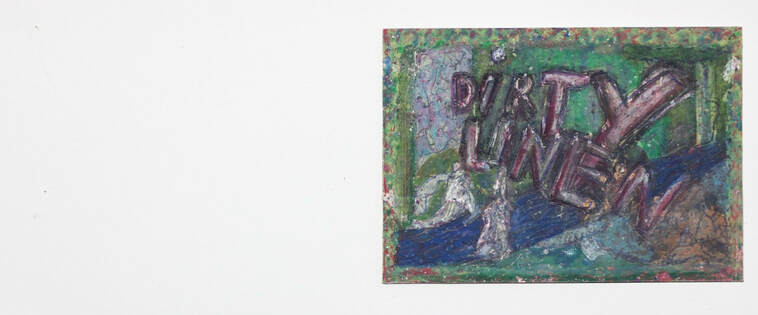
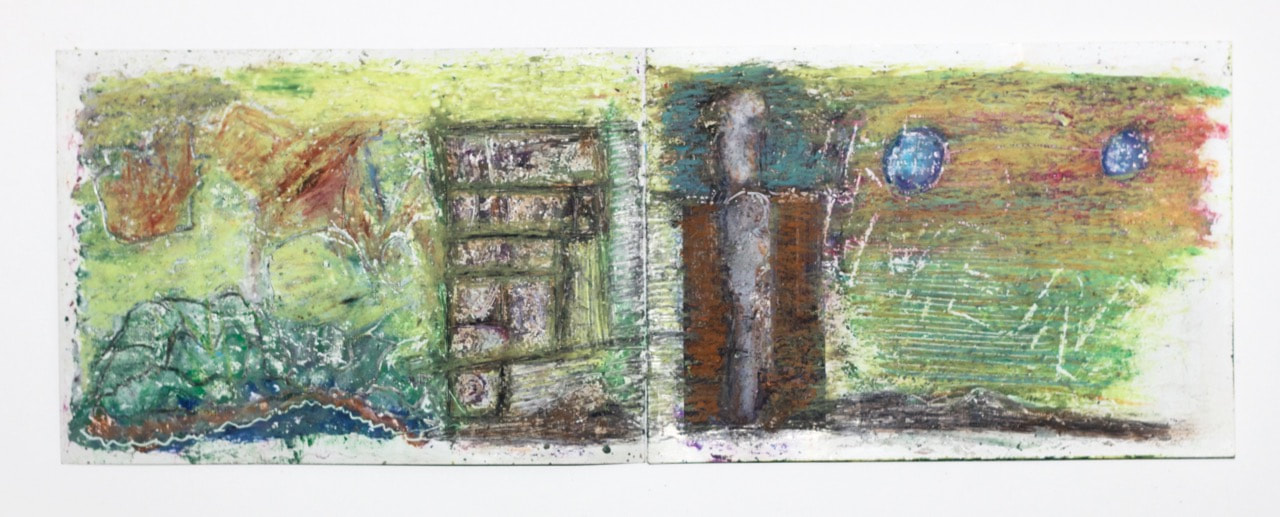
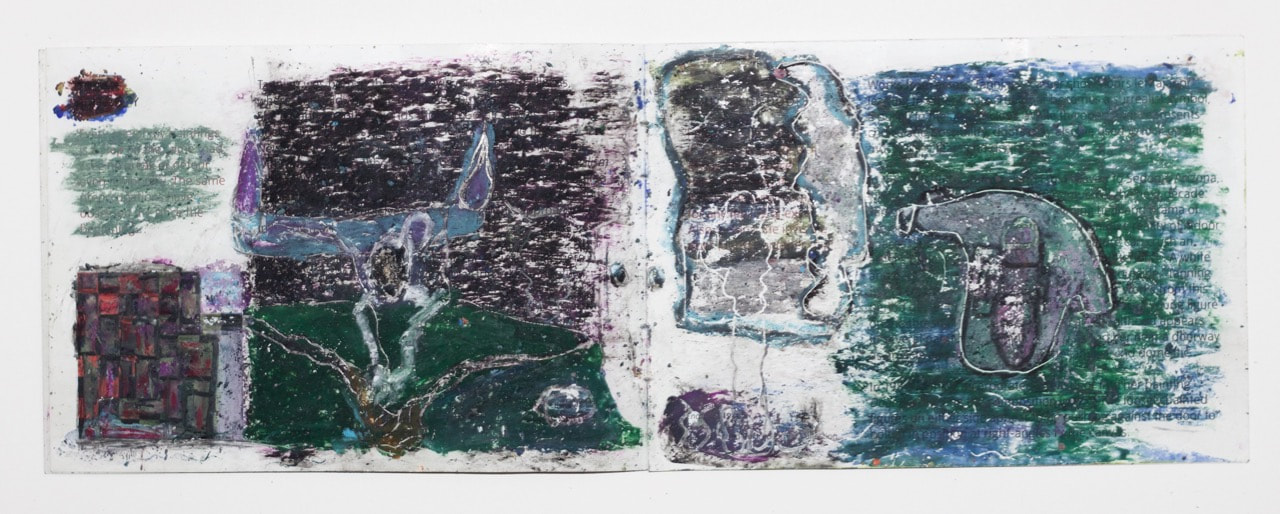
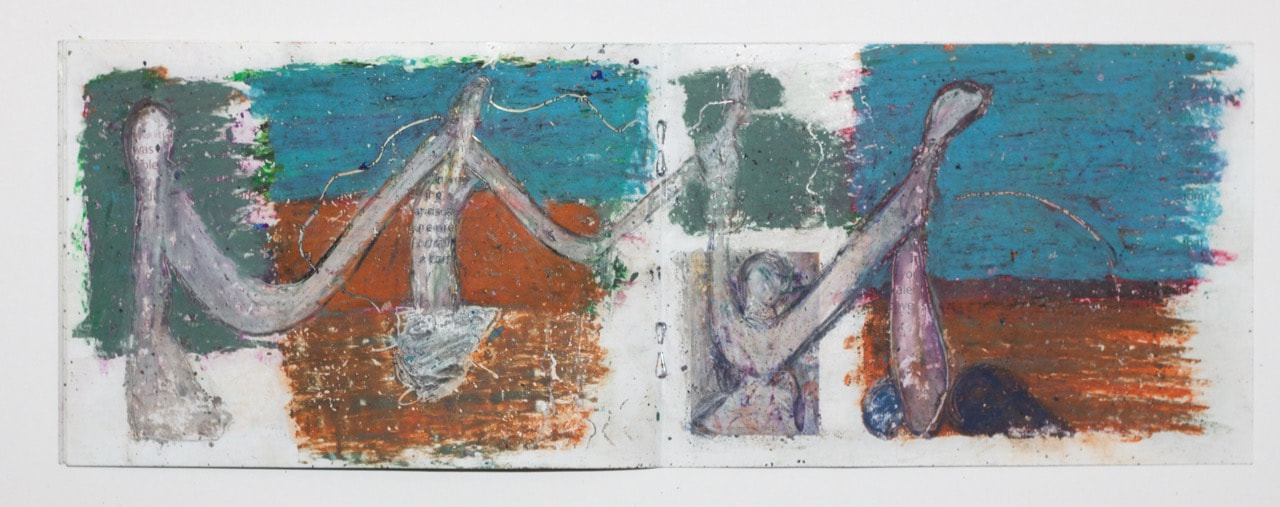
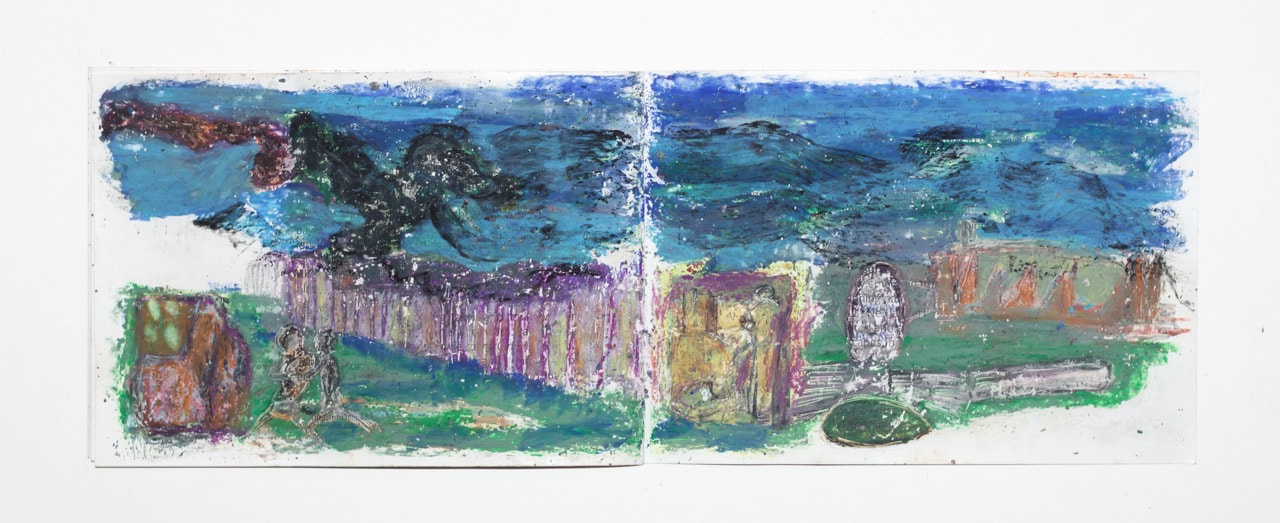


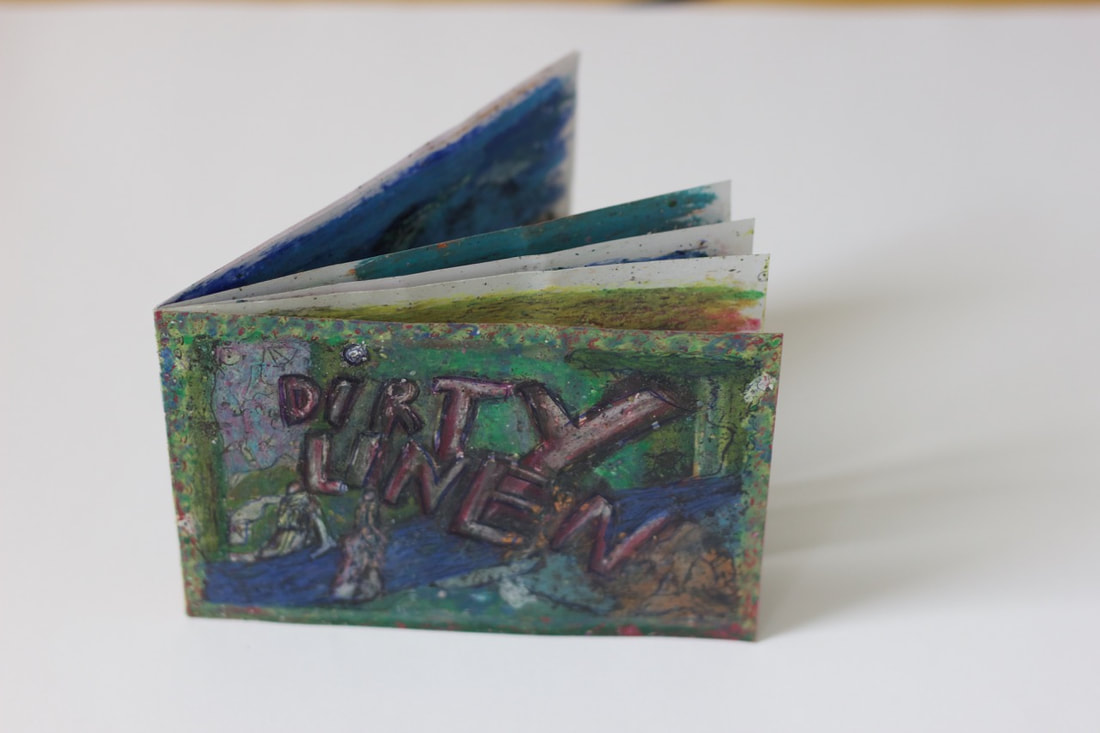
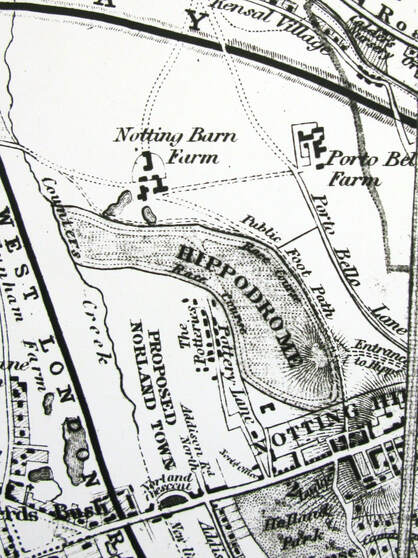
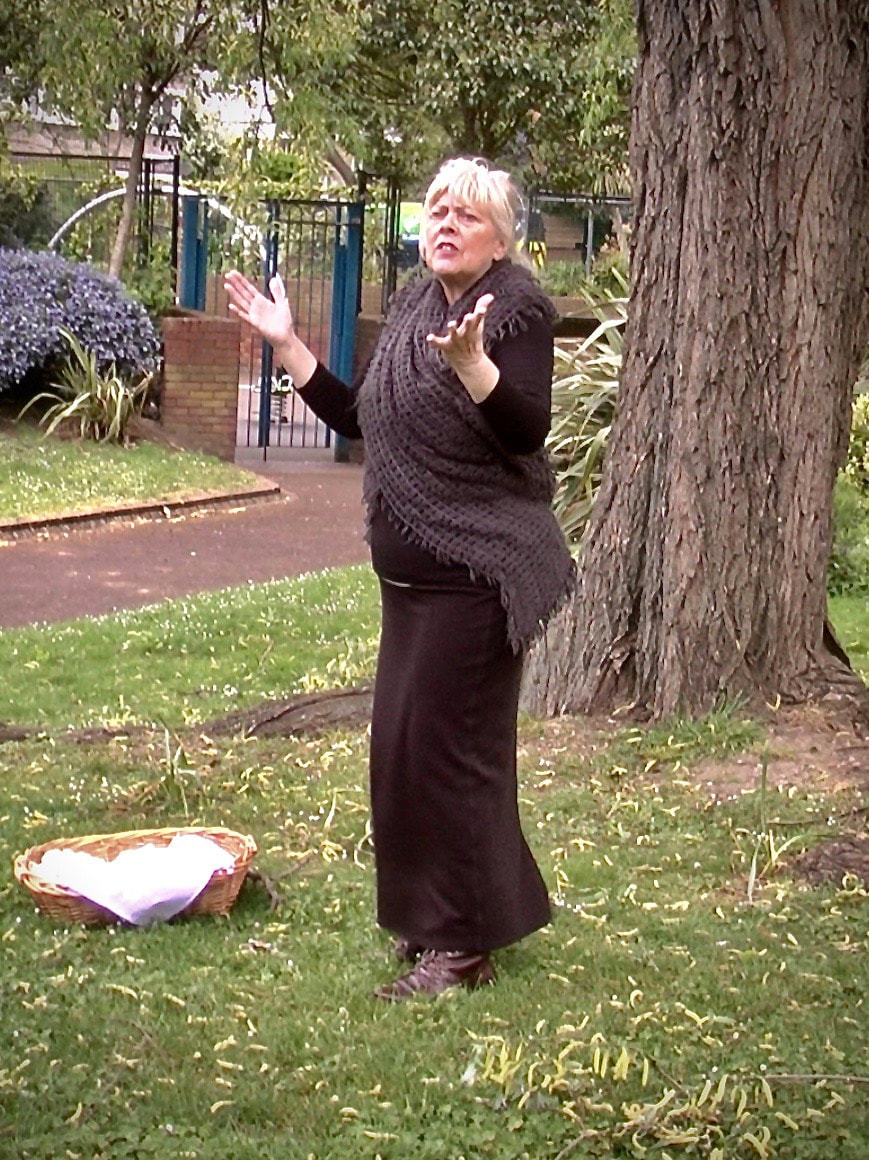
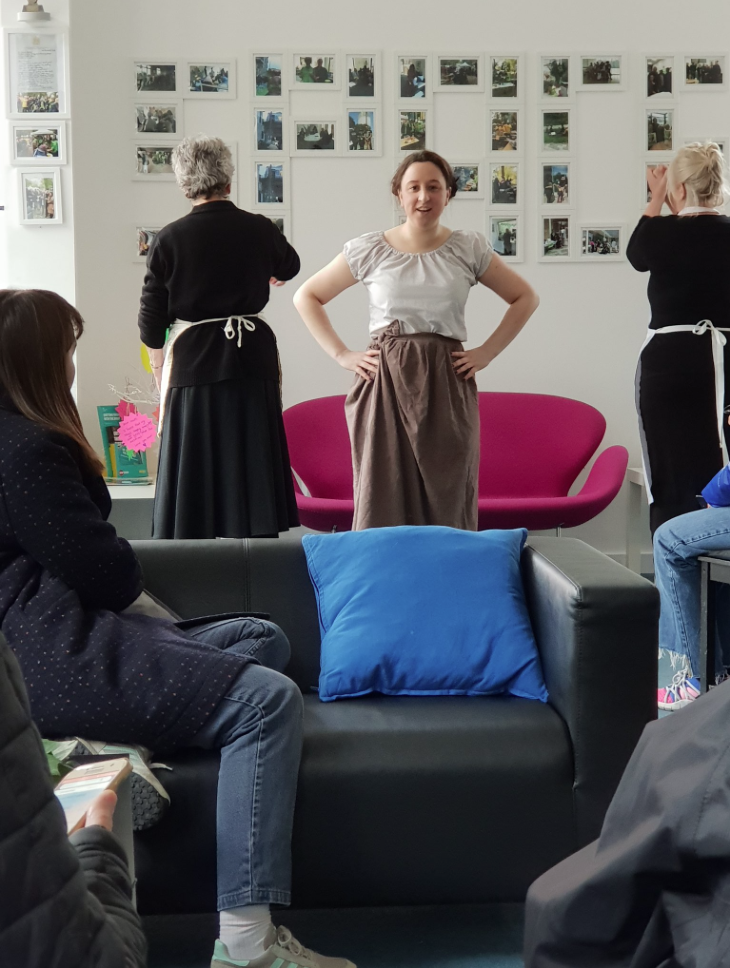
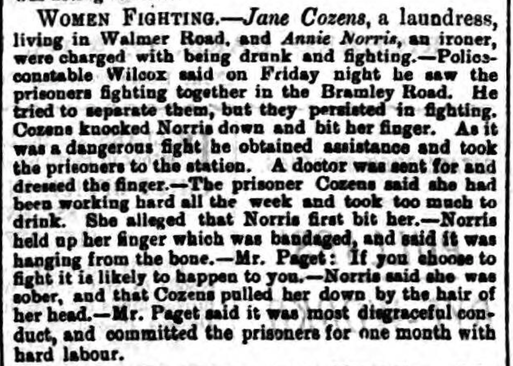
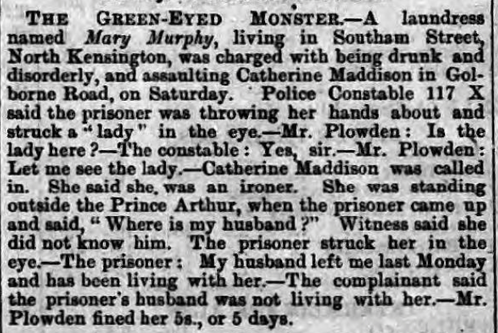
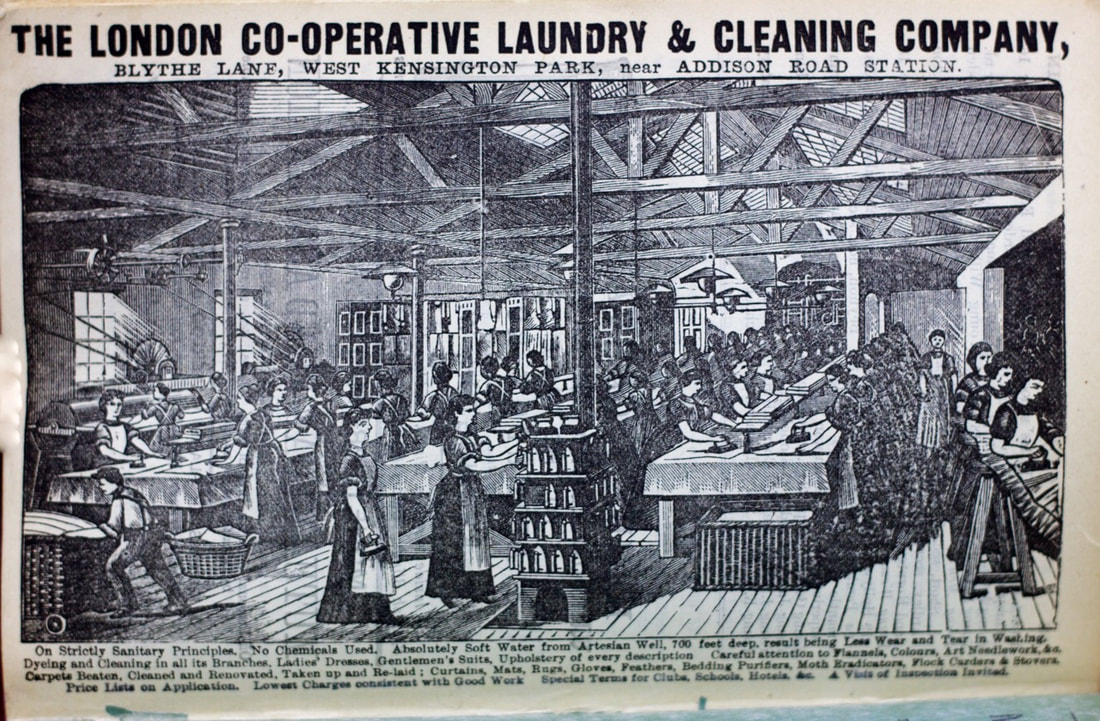
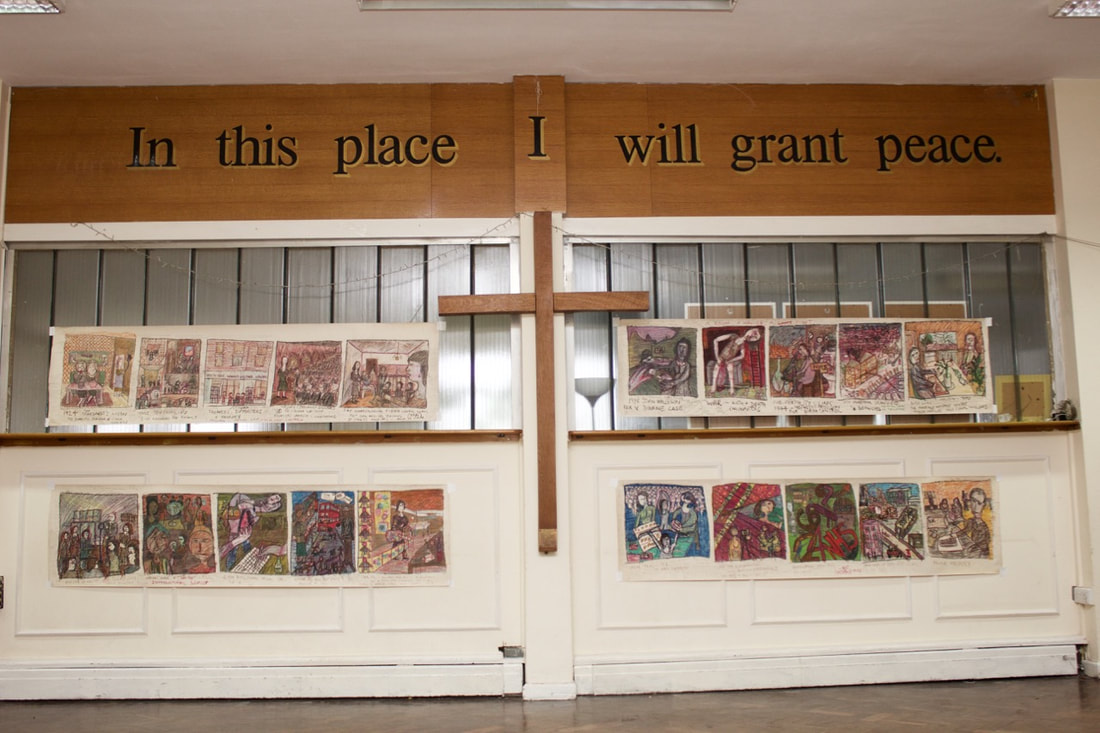
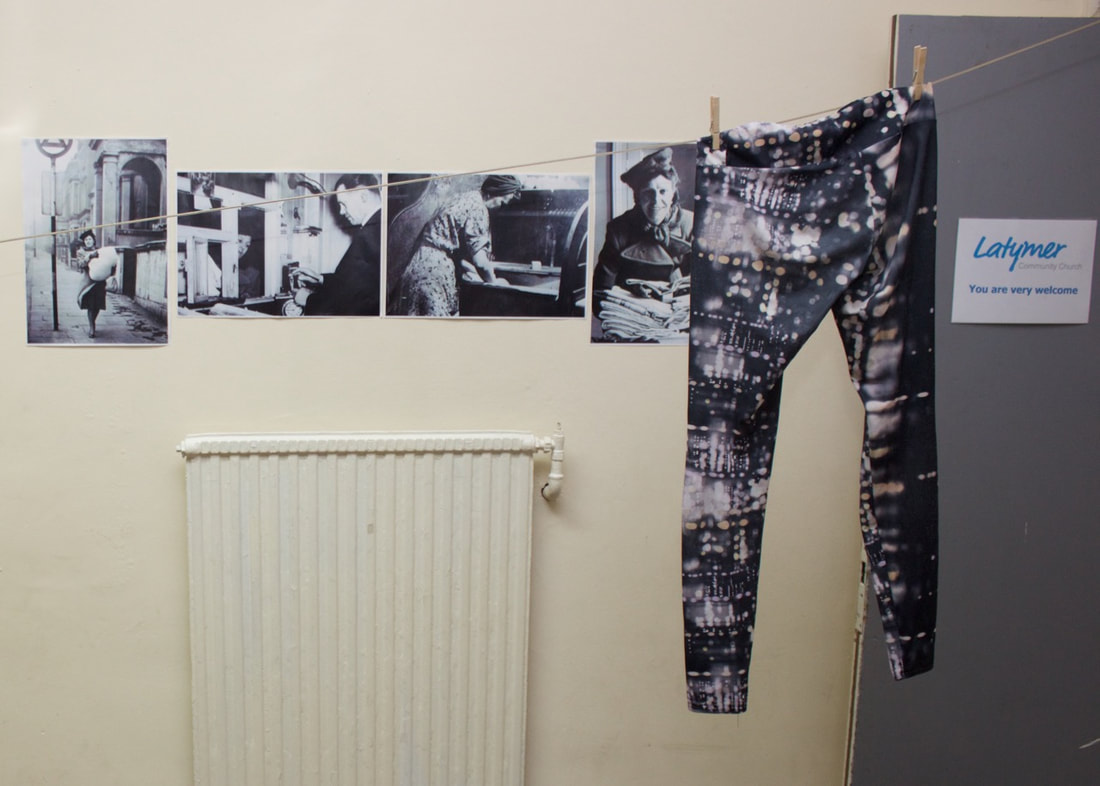
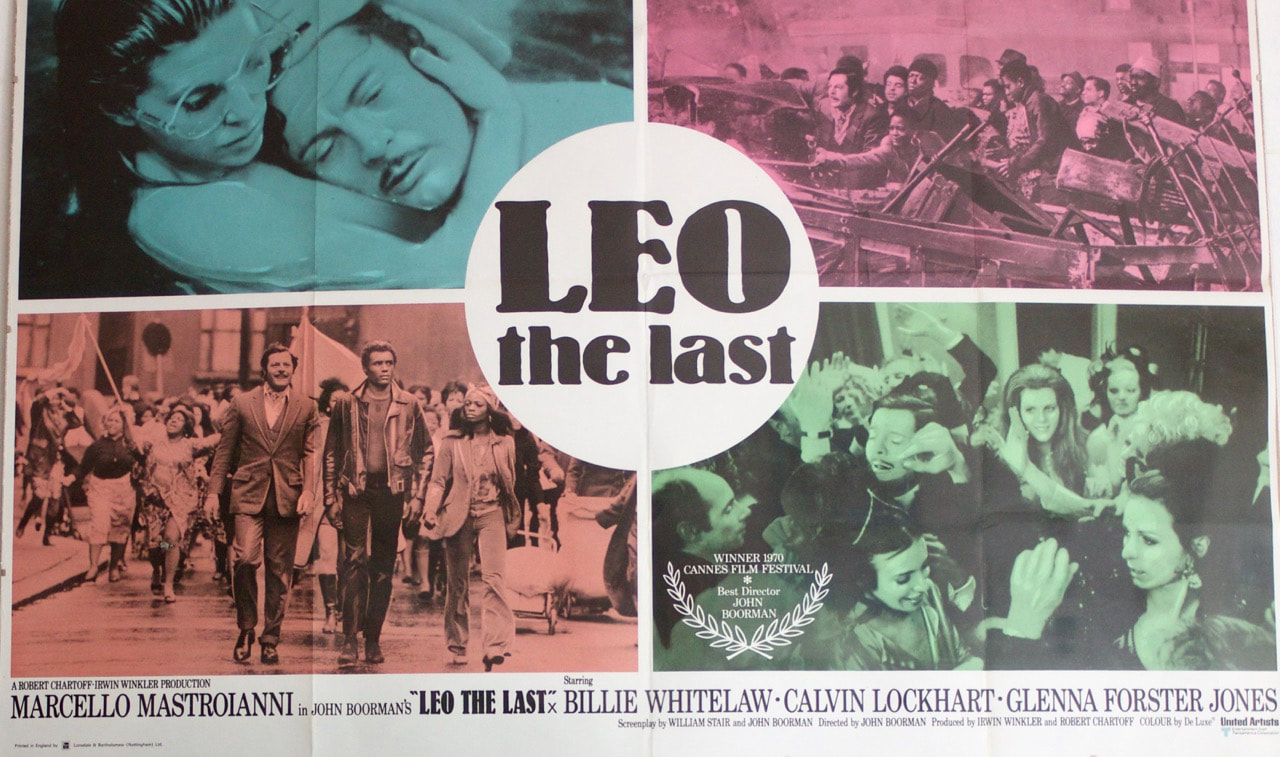
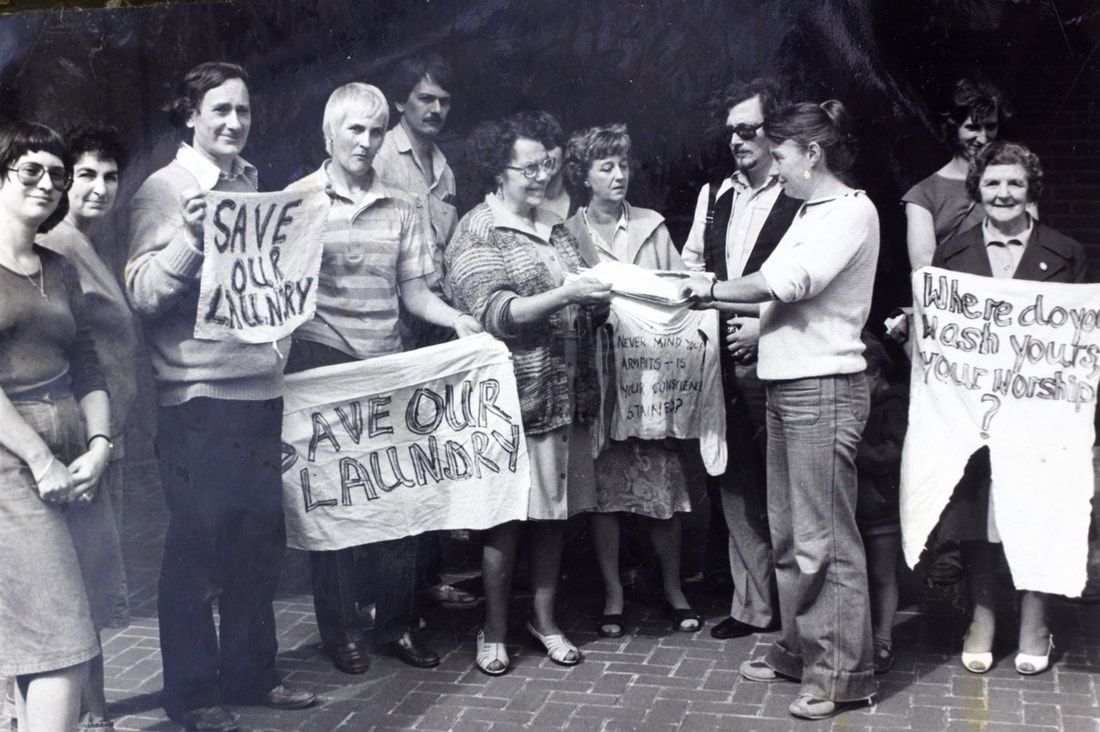
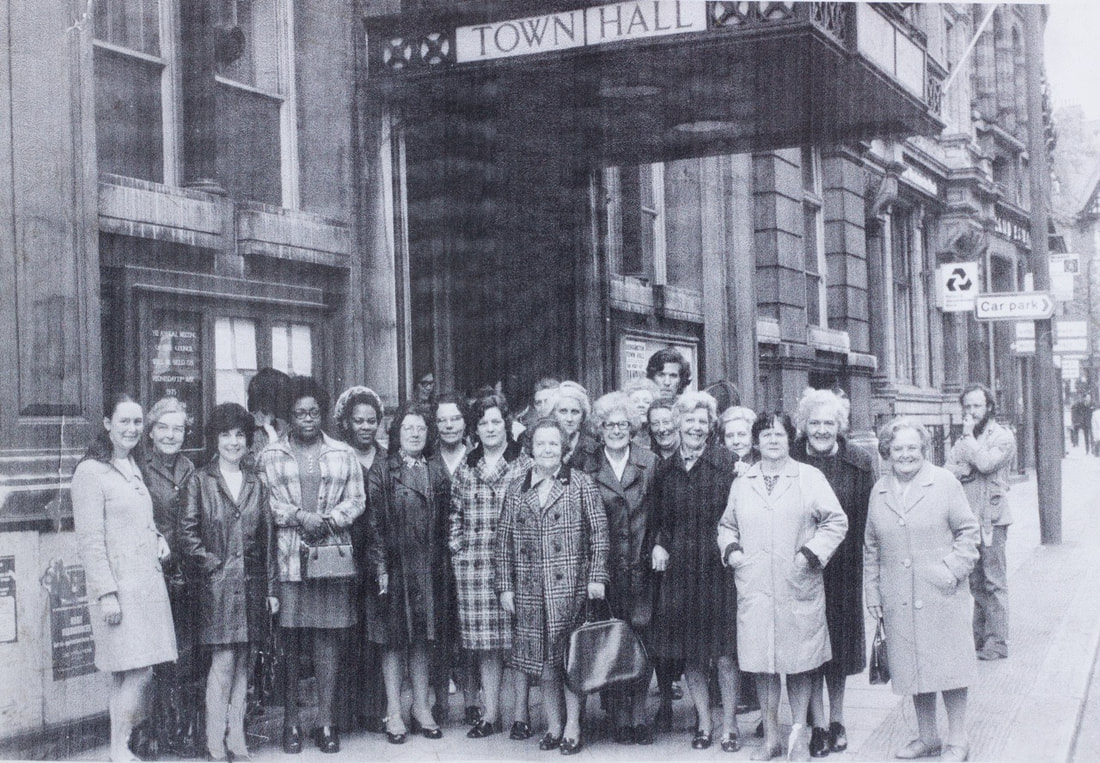
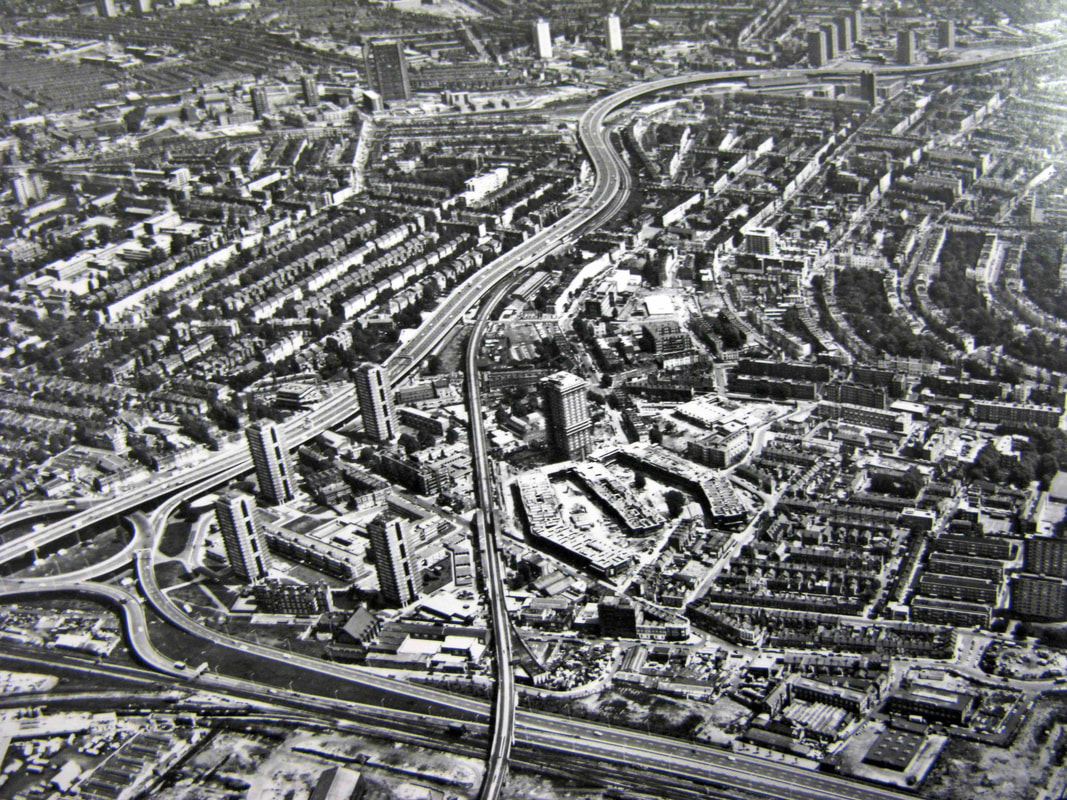
 RSS Feed
RSS Feed
